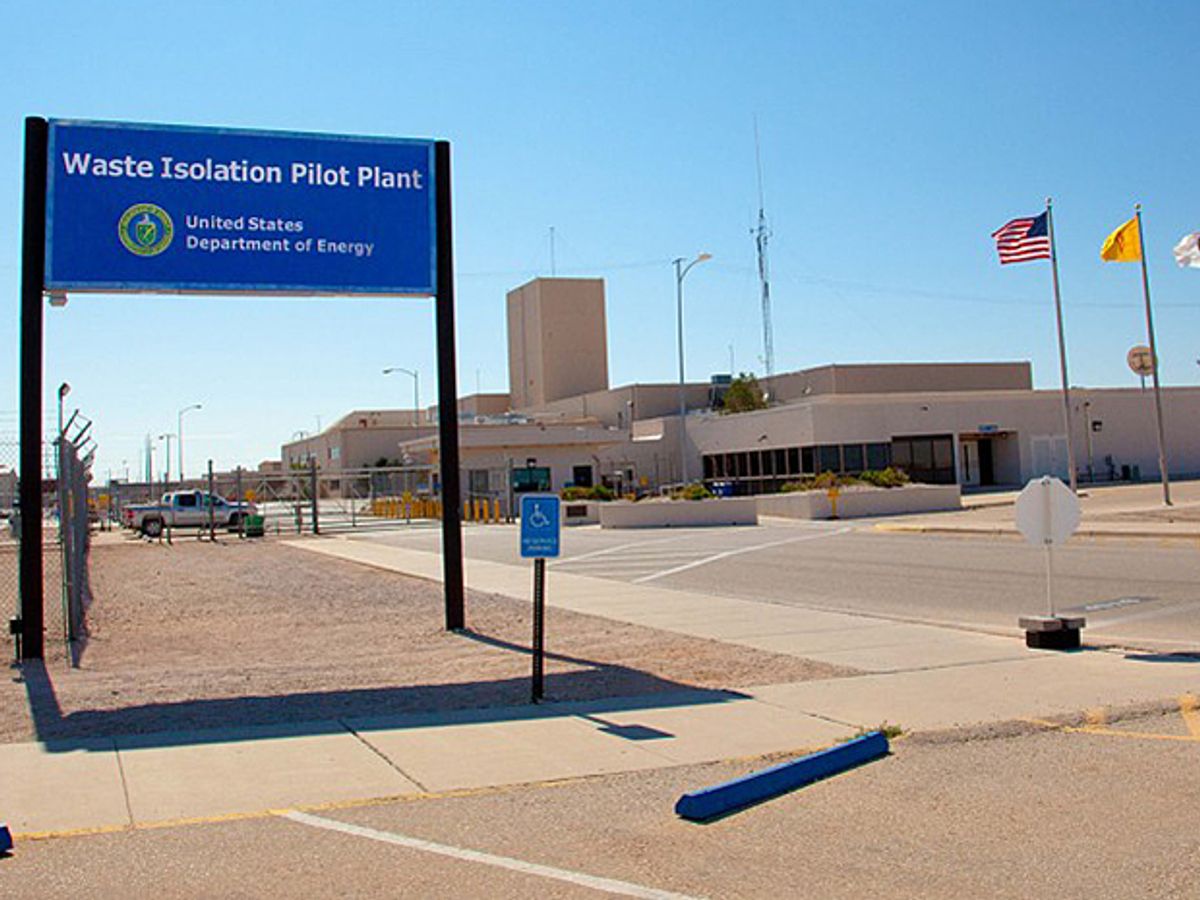In 2014, a 55-gallon drum of nuclear waste exploded at the underground Waste Isolation Pilot Plant (WIPP) in New Mexico, the world’ s
only underground repository for transuranic waste (radioactive isotopes with mostly very long half lives). The amount of radioactive material released into the atmosphere was below existing security limits, but the facility has been closed down for recovery since the incident.
One positive result came from this accident: Robert Hayes, a nuclear engineer at North Carolina State University in Raleigh, was subequently able to demonstrate how it is possible to pinpoint the site of the release as well as to measure the amount of released nuclear material. Hayes used sophisticated software, meteorological data supplied by the National Oceanic and Atmospheric Administration (NOAA), and information from air sampling and monitoring equipment located several kilometers from the WIPP facility. His research will be published in the April 2016 issue of the journal Health Physics.
Hayes’ approach offers a wide field of possibilities for investigating and locating releases of radioactive material into the atmosphere—whether accidentally, from, say, a vent at a nuclear facility, or deliberately dispersed into the atmosphere by a dirty bomb. In fact, the principle is simple: By attempting to get the genie back into the bottle (figuratively of course), you find out where the bottle is.
Let Hayes explain. When an amount of radioactive material is released into the atmosphere, it will spread out in directions defined by meteorological conditions, mainly wind. By collecting data from different sampling stations in an area, and by looking at how the concentration of the radioactive material evolves over time, it is possible to create maps of how and in which direction it has moved. Now, by looking at recent meteorological data, it is possible to, in a sense, back extrapolate the cloud formation using computer modeling until it is concentrated above the site of the radiological release. Hayes does note, however, that this method will work only if you know when the release of radionuclei happened. A nuclear explosion, for example, can be precisely pinpointed because the time of the explosion can be verified independently with seismic or optical data.
When you don’t know the time of the release, you have to use some tricks. “You still back-extrapolate, but you make the assumption that it took place an hour ago, two hours ago, three hours ago. For these periods of time, you then back-extrapolate, and once you find a location that is credible—let’s say, a nuclear facility, then you pretty much know where the radiation came from, and you have the time when the radioactivity was released,” says Hayes.
The location and release time aren’t the only things that can be deduced from these measurements. “If you already know the time and location, you have a much better scenario because you are able to extrapolate much more accurately and find out how much radioactive material actually was released and the time profile of that release,” says Hayes.
Detecting and locating releases by nuclear facilities in areas, such as North Korea, that are not accessible to investigators, presents an additional difficulty. The proliferation of similar radioactive isotopes released into the atmosphere by nuclear bomb tests during the last century makes it a challenge to sniff out the new stuff without the accompanying information. But one clue researchers are trying to exploit is the difference in the ratio of radioactive isotopes between recently released nuclear material and that of older nuclear fallout. Those differences can be detected because the materials have different half lives.
“We are looking at differences in those ratios, and they are the ‘fingerprints’ of recent events. For example, in North Korea, radioactive releases by nuclear facilities would be difficult to prevent, and this would provide a potential fingerprint that can be identified off-site,” says Hayes.



